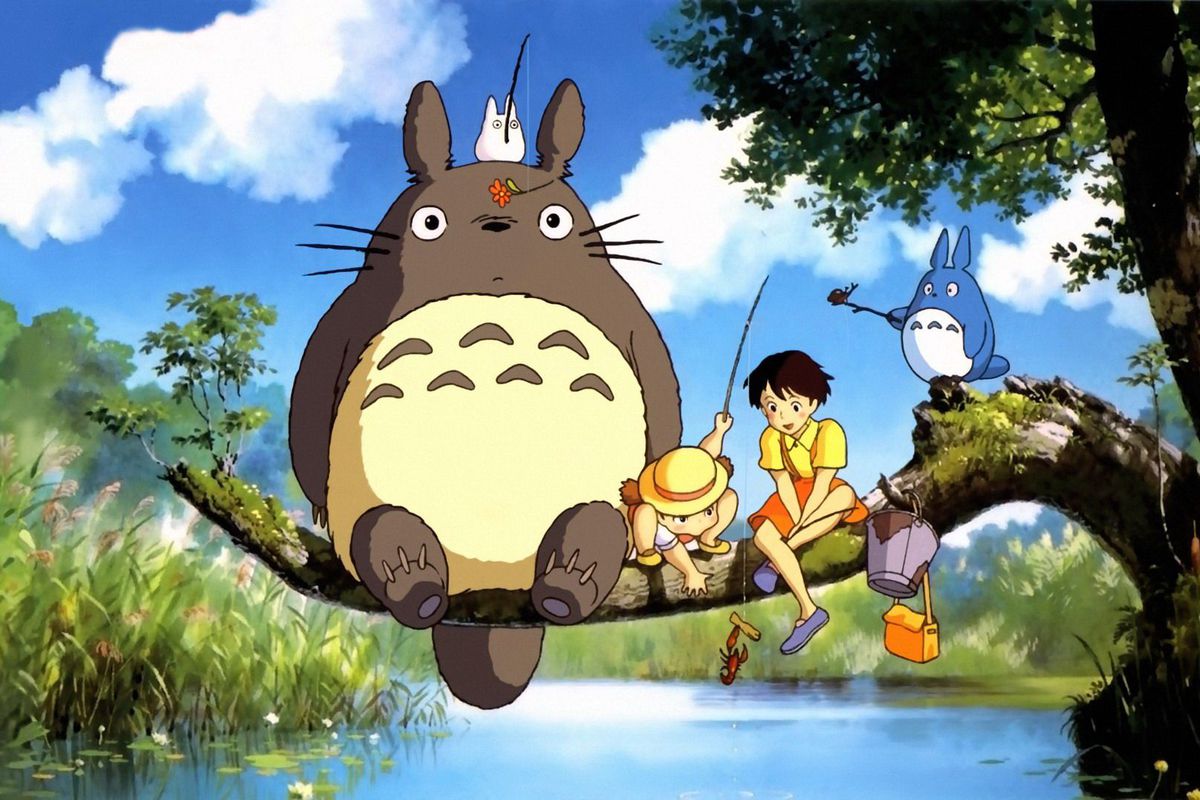"My Neighbor Totoro" has been one of the most popular of all family movies without ever much advertising or advertisement. This is a perennial video bestseller.
It's ranked the fifth best family movie of all time on the Internet Video Database, right behind "Toy Story 2" and ahead of "Shrek." The new Anime Encyclopedia calls it the best Japanese animated video ever made.
Check out these fan-favorite moments in "My Neighbor Totoro."

Contents
Overview Of The Film
My Neighbor Totoro is full of these experiences-peaceful and full of wonder and mystery. To explain them in-depth would be a disservice to them since there is so much of their power to be seen in Miyazaki's mastery of design, rhythm, light, and shade.
It is enough to say that each character was considered and made with utmost care and consideration, from the mysterious Catbus to the ordinary young country boy Kanta – so shy he can't even talk to Satsuki first.
My Neighbor Totoro is one of Miyazaki's most autobiographical films, and its setting is strictly based on rural Japan in which he grew up. Miyazaki's mother was critically ill with tuberculosis when he was a child, and he felt the fear of losing Mei and Satsuki felt in his film.
This grounding in personal history is perhaps what gives Totoro its extra edge. While its portrayal of a bucolic paradise and a family pulling together in the face of illness may seem like mere mawkish fluff when reading like a synopsis, there is another current underneath the shimmering surface.
Favorite Moments In My Neighbor Totoro
Shinto Philosophy In The Movie
The film is filled with subtle allusions to Shinto, an ancient animistic ideology in which nature is revered in all its forms. All have a spirit according to the ideology.
During one scene, Mei and Satsuki's father tells them that trees and people used to be friends a long time ago. He asks the girls to give a "sweet greeting" to the large tree in their backyard, then bows to it and thanks Mei for protecting it.
Of course, the most critical aspect of the tale is Totoro himself, who can be viewed as the forest spirit.
Mei's Death
Mei is actually dead in the movie, according to various versions of the same fan theory, and Totoro is the God of Death.
Proponents of this hypothesis point to numerous "clues," such as the fact that a sandal is found in a pond (suggesting Mei drowned) and the lack of shadows in a scene at the end of the film when the two sisters are seen together.
Some also said the film is based on The Sayama Incident, an urban myth that involves two Sayama Hills sisters' deaths. Studio Ghibli, however, stated to put all doubts to rest.
Mei Running After Totoro
Viewers found some peculiar parallels between My Neighbor Totoro and the fantastic 1865 novel by Lewis Carroll (which Disney later filmed in 1951).
Mei's seen running after a small, white Totoro and finally falling down a hole within the camphor tree reminds us of the popular imagery of the chase and rabbit hole in Alice, Wonderland.
Others have even drawn comparisons between the Catbus and the Cheshire Cat's smile, but after Carroll's character, Miyazaki denied designing it.
A Few Facts About My Neighbor Totoro
The film is set in Sayama Hills, Tokorozawa, about an hour's drive from Tokyo, where Miyazaki owns a home.
Miyazaki walked around the city regularly and took in the lush scenery that influenced much of the film's background.
"If I weren't living in Tokorozawa, Totoro would never have been born," Suzuki quoted Miyazaki saying, Comicbook.com reports.
The area is now called "Totoro Forest," and fans can visit a Totoro statue inside the Kurosuke House, which looks identical to the film's one.

Conclusion
My Neighbor Totoro has become a major Japanese icon because Mei is an ordinary Japanese child with whom Japanese children can sympathize. She also reflects the innocence of childhood and child archetype as defined by Jung (Jung called the specific basic types in terms of human beings' collective unconscious patterns).
Archetypes are revealed only through metaphors often found in literature, particularly in folk tales and children's writing. Folk tales use archetypes with a little elaboration, so in brief, simple tales, one finds such full sense.



